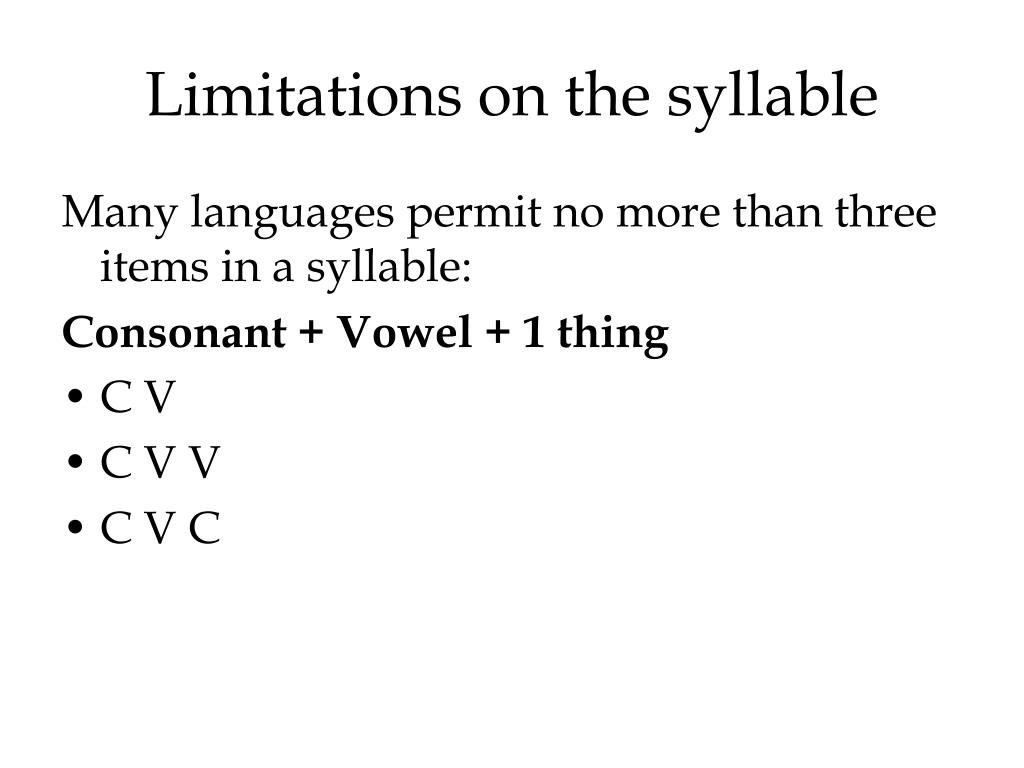


A margin with only one phone is called simple, and a margin with two or more phones is called complex. The margins of the syllable can each be empty, or they may contain one or more consonant phones. The remaining phones in the syllable (if any) make up the margins: the onset (Ons) on the left of the nucleus and the coda (Cod) on the right. Shilha, a Northern Berber language of the Afro-Asiatic family, spoken in Morocco), which allows syllabic sonorants (fairly typical in the world’s languages) as well as syllabic obstruents (quite rare in the world’s languages), as in the words ‘she surprised’, ‘she did’, ‘it was wet’, and ‘she remembered (Ridouane 2014). Some languages make more extensive use of syllabic consonants, such as Tashlhiyt Berber (a.k.a. However, some languages, like English, allow syllabic consonants in the nucleus, as in the English word bird and the second syllables of bottle and bottom. The loudest, most prominent position within a syllable is called the nucleus (abbreviated here as Nuc), which is usually filled by a vowel in most languages. Note that the syllable boundary mark is only needed between syllables nothing extra is needed to mark the beginning of the first syllable or the end of the last syllable. Of course, some words may have only one syllable, such as the English words bat and prints, and some syllables may have only one phone, such as the English words owe and awe.Īs a unit of structure, syllables are often abbreviated with the Greek letter sigma σ, and within a transcription, the boundaries between syllables are notated with the IPA symbol, as in the transcription Canada. Thus, words can contain multiple syllables, and each syllable can contain multiple phones. One such layer is made up of units called syllables. While spoken language words can be decomposed into phones, there seem to be other layers of structure that are relevant to how spoken languages function.


 0 kommentar(er)
0 kommentar(er)
